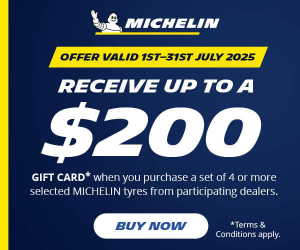It speaks volumes about how crucial the new D27 Navara is for Nissan that it is only confirmed for sale in two markets where it should perform well: Australia and New Zealand.
Despite being built in Thailand, Nissan is yet to confirm whether it’ll be sold there. For now, only the two big Oceania markets will receive the Mitsubishi Triton-based model.
If you weren’t able to catch our coverage of the Navara’s reveal last week, Nissan’s redesign consists of a new front and rear end, as well as trim-specific touches such as the wheel-arch mouldings on grades like the Pro-4X.
Inside the only thing setting the Navara apart from the Triton is its Nissan steering wheel badge, digital instrument cluster screen graphic, and embroidered seat upholstery and floor mats.

The biggest change to turn the Triton into a Navara is the suspension, with local engineering experts Premcar – best known for the Navara and Patrol Warriors – enlisted to tweak it for local roads.
So what is the Nissan Navara like, is it worth buying over its Triton twin, and can it deliver enough to take on the best-selling Ford Ranger and Toyota HiLux?
This review may end up being more about what we don’t yet know rather than what we do know about the Navara, as Nissan’s reveal was scant on some details.
So far we know there will be the ST-X and Pro-4X grades of the Navara, but the traditionally more affordable SL and ST are yet to be confirmed.

Of these, we only got to see and drive the ST-X in person, with about half an hour of driving at a 4×4 park. No highway or city driving here.
There could be one of two reasons behind this: number one being Nissan didn’t want the rest of the world to pap the Navara before it broke cover, or it wanted to hide its on-road flaws.
While the former reason is more likely, the Triton has been criticised for having over-eager safety systems, none of which would be a factor during the off-road driving we encountered.
Unfortunately this limited drive program also meant we weren’t able to put the Premcar-fettled suspension to the full test.
Changes compared to the Triton were limited to new larger dampers with revised internal components. These were developed over 12 months and more than 18,000km of testing.

With the standard springs, sway bars and general geometry being unchanged, the slow-speed driving didn’t show any drastic changes to how the Navara rides compared to the Triton, however on a short, slightly faster section of road around 60km/h, it felt compliant and reasonably smooth.
While the outgoing D23 Navara had a coil-sprung rear end, the D27 moves back to a leaf-sprung setup, but ride quality isn’t compromised.
The 2.4-litre four-cylinder bi-turbo diesel engine never feels troubled, though again we weren’t able to see if the slow stop-start system on the Triton still plagues the Navara.
A six-speed automatic transmission sits behind the engine, and though it’s one ratio down compared to the outgoing model, it’s still enough to match the likes of the HiLux.
The Navara ST-X we drove gets a ‘Super 4WD’ full-time four-wheel drive system, a renamed version of Mitsubishi’s Super Select. Lesser grades get a part-time system named ‘Easy 4WD’.

On the technical parts of the course the 4×4 system and Torsten rear limited-slip differential aren’t stressed, and functions like hill descent control help to take the worry away when going down particularly steep hills.
Despite the doors sounding relatively hollow when being closed, there’s also reasonably little road noise entering the cabin, even on high-frequency, washbourne surfaces.
Unfortunately without having driven the more basic Navara grades with the lesser 4×4 system, or even the flagship Pro-4X, it’s hard to gauge whether the new Navara is a real winner off-road.
Inside the cabin, it’s not the modern interior we’ve come to expect in new Utes, with the likes of the Ranger and even the Kia Tasman setting the bar.

The Navara still makes do with two analogue instruments, flanking a 7.0 inch TFT screen between them. Most of the big players in the segment already have or are getting fully digital dashes.
A 9.0-inch infotainment touchscreen sits atop the dashboard, though it too is reasonably dated in its capabilities, with wireless Apple CarPlay but only wired Android Auto.
For the first time the Navara gets connected services, providing an extra level of convenience to owners.

It’s not the only new aspect of the ownership experience, as the D27 – like the Triton – now requires AdBlue, with a 17-litre tank onboard. It’s the first Nissan in Australia to use the fluid, adding a potential layer of complexity for those unaware.
Unfortunately that’s where this review ends. We look forward to getting behind more versions of the Navara across a greater time period and on a wider range of roads.
Early impressions suggest the D27 Nissan Navara will be a solid choice, but there are still big question marks around how much the 4×4 dual-cab pickup automatic-only lineup will be priced, and if enough can be shifted to meet the bottom line.














Discussion about this post